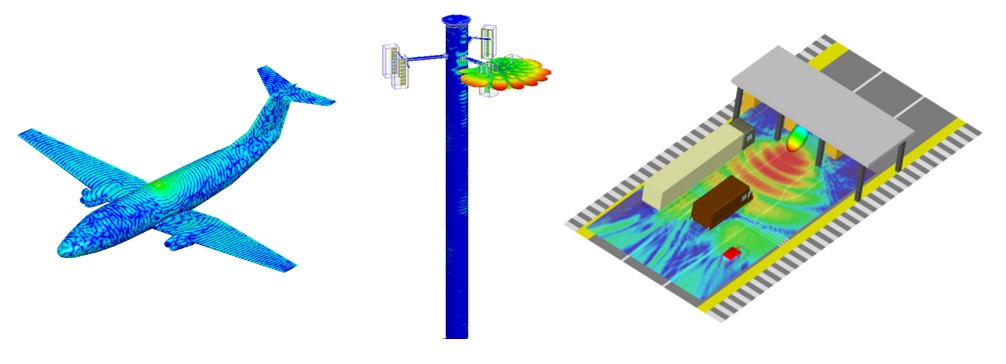The performance of antennas installed on large platforms, such as ships or aircraft, is critically important. These environments can significantly influence the radiation characteristics of the antennas, making their optimization challenging. It’s essential to simulate the interaction of an antenna with its environment accurately.
Electromagnetics Infinity provides simulation services related to antenna placement, including:
- Far-field installed radiation patterns
- Mutual coupling analysis
- Optimization of antenna placement on various platforms like vehicles, ships and aircraft
- Simulating various scenarios, for example, mmWave radar interaction with a road or cellular coverage in an urban setting

Different electromagnetic numerical methods are employed in HFSS based on the size of the model, especially when referencing its dimensions in terms of wavelengths. For antenna placement simulations, HFSS is particularly valuable, as it offers a range of solvers suited to varying model sizes.
For small to medium-sized problems, the following accurate numerical methods are commonly used:
- Finite Element Method (FEM), which encompasses the domain decomposition method
- Method of Moments (MoM)
- Hybrid method, which combines FEM and MoM
For larger problems, an asymptotic high-frequency approximation technique known as Shooting Bouncing Ray (SBR+) is adopted. The HFSS SBR+ expands upon the traditional SBR method by incorporating advanced diffraction physics, including the Physical Theory of Diffraction (PTD), Uniform Theory of Diffraction (UTD), and Creeping Wave (CW) physics, ensuring enhanced fidelity.
